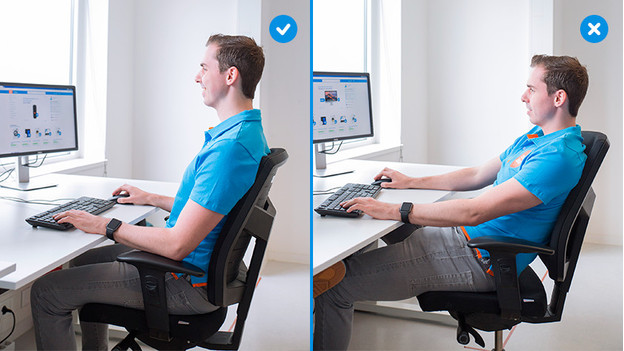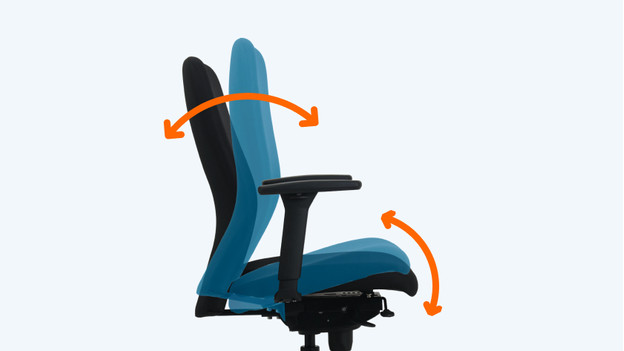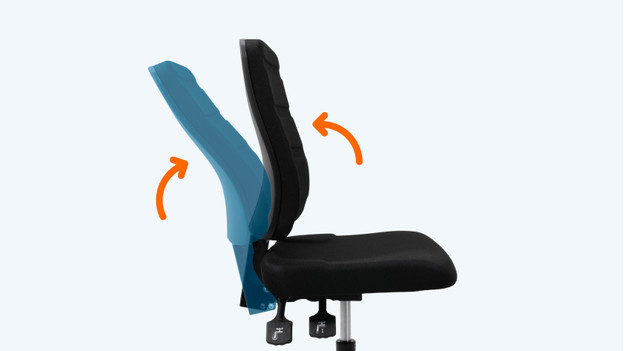
What's the permanent and synchronous mechanism in a desk chair?
Active sitting vs passive sitting

In the past, we were always moving. Now, we mostly sit. Our bodies weren't made for that. You can often set whether you actively or passively sit in your desk chair yourself. Active sitting means that we actively use our muscles when we're sitting down, such as the muscles in your upper and lower back. When we sit passively, we use our muscles as little as possible. It's better for the body to sit actively.
Permanent contact mechanism

With the permanent contact mechanism, the backrest follows the movements of the upper body. This way, your back remains supported in every position when you sit actively. Depending on your work, you can easily switch between sitting upright and leaning back. Thanks to this movement, the intervertebral discs absorb new nutrients. This helps prevent back problems. With a passive sitting posture, you set the desk chair to a fixed position. Adjust the backrest 1 position to the back to prevent straining your neck.
Synchronous mechanism

A desk chair with a synchronous mechanism has a backrest and seat that tilt proportionally yo each other. The degree differs, but it's often 1:2.5. If the seat tilts 10 degrees, the backrest tilts 25 degrees, for example. Your back and upper legs are well supported this way, and you keep your pelvis supported. In addition, it allows you to move naturally. The synchronous mechanism stimulates an active sitting posture. If you want a passive sitting posture, block the synchronous mechanism.
Mechanism with tilt tension

Both the permanent contact mechanism and synchronous mechanism sometimes have tilt tension. This allows you to set the resistance to determine how easily you can tilt the chair. You can adjust this with a dial on the bottom of the chair. Sometimes, it's automatic. This means that your body weight determines the resistance. This way, you prevent feeling like you're falling backwards. On the other hand, too much resistance strains your muscles. You can set the resistance so the backrest smoothly tilts backwards when you let your arms hang back.

